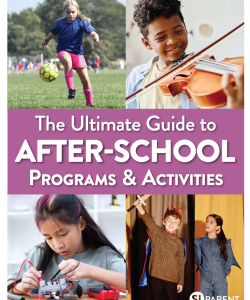
Evidence released by the American Optometric Association (AOA) now supports that children ages 6 to 18 years should receive a comprehensive eye exam before entering the first grade and annually thereafter. The comprehensive eye exam guideline has shifted from a two-year to a one-year frequency recommendation due to research showing the increased prevalence of eye and vision disorders and further understanding of the significant impact eye health has on a child’s development.
The AOA is urging all parents and caregivers to begin taking their children to a doctor of optometry for regular, in-person comprehensive eye exams at a young age to establish a lifelong prioritization of eye health. The AOA is concerned because many children only receive vision screenings offered at a school or pediatrician’s office, which fail to catch a wide variety of conditions that only a comprehensive eye exam can detect.
Good vision and overall eye health are essential in childhood development. Poor vision can affect a child’s ability to participate in class and cause them to fall behind in their education. It can also impact their performance in sports, among other activities. The AOA is educating parents about how comprehensive eye exams go beyond vision screenings commonly offered at school or a pediatrician’s office, which fail to catch a wide variety of conditions. A doctor of optometry can diagnose and treat any eye or vision conditions that may affect overall health, such as glaucoma, brain damage and head trauma.
The AOA has compiled recommendations in line with the new guideline to ensure eye health and safety is a priority:
- Preschool-age children should receive at least one in-person comprehensive eye and vision examination between the ages of 3 and 5 to prevent and/or diagnose and treat any eye or vision conditions that may affect visual development. One in five preschoolers has a vision problem.
- School-age children should now receive an in-person comprehensive eye and vision examination annually to diagnose, treat and manage any eye or vision problems. Previous recommendations were for eye exams to occur once every two years.
- Routine vision screenings offered at a school or pediatrician’s office are not enough. In their initial stages, many vision and eye health conditions lack obvious signs or symptoms. Routine vision screenings cannot be relied on to catch most vision problems. Even if problems are detected, 61 percent of those children with a problem will not receive appropriate follow-up. Evidence demonstrates that the best course of action is following an annual eye exam schedule.
- Children who experience a concussion should visit their optometrist for a comprehensive eye exam in addition to an appointment with their health care provider. Studies have shown that there is a high prevalence of vision problems in children who experience a concussion, so comprehensive eye exams are essential in protecting their vision as well as determining if more care is needed.
- Ocular trauma such as corneal scars, hemorrhages and folds are often linked to child abuse and neglect. Comprehensive eye exams play an important role in identifying signs of abuse when external signs may be limited or nonexistent.
- Some additional updates to the guideline include information on myopia, eye injury/protection, the benefit outdoor exposure has on vision and the importance of ultraviolet radiation and blue light protection.
The AOA is committed to ensuring health and safety for all children. The new guideline is based on a three-year systematic review in which the AOA gleaned insights from doctors of optometry and other stakeholders in the pediatric health field, such as pediatricians, social workers and parents. The guideline provides best practices on eye exam procedures and management of conditions and diseases, among other clinical topics.
Provided by the American Optometric Association (AOA). For more information on the revised guidelines, visit www.aoa.org/childrenseyehealth.

